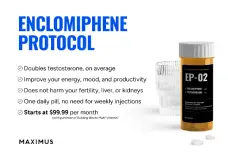* Recent studies (re)discover other limitations of the Hershberger-type bioassays whereby the relative (anabolic:androgenic) potency of a test chemical depends markedly on bioassay design features rather than being a relatively fixed characteristic of that chemical (10).
10. Chang WY, Hill RW, Burnett KR, Hein N, Haakmeester CA, vanOeveren A, Zhi L, Keith MB, Negro-Vilar A, Lopez FJ [P3–210] Artificial enhancement of androgen tissue selectivity by delayed compound administration in the castrated rat model of hypogonadism. Proc of The Endocrine Society Annual Scientific Meeting, Toronto, Canada, 2007
* Although the choice of muscle endpoint seemed adroitly practical, especially compared with the cumbersome alternatives (like nitrogen retention, or its modern successsor, lean mass), this may have been at the expense of the overall goal. By the late 1950s, the limitations of the levator ani endpoint were understood (11) as summarized ineffectively a postmortem of that failed search (5).
5. Potts GO, Arnold AP, Beyler AL 1976 V. Dissociation of the androgenic and other hormonal activities from the protein anabolic effects of steroids. In: Kochakian CD, ed. Anabolic-androgenic steroids. Berlin: Springer-Verlag; 361– 406
11. Nimni ME, Geiger E 1957 Non-suitability of levator ani method as an index of anabolic effect of steroids. Proc Soc Exp Biol Med 94:606 – 610
* Despite the modern improvements in the Hershberger bioassay (12), it still embodies fundamentally the same approach so that repeating the search based on the same bioassay is most likely to yield the same outcome.
12. Organisation for Economic Co-operation and Development 2009 Report of the validation of the Hershberger bioassay (weanling model). In: OECD environment, health and safety publications: series on testing and assessment. Paris: Organisation for Economic Co-operation and Development.
http://www.oecd.org/document/30/0,3343, en_2649_34377_1916638_1_1_1_1,00.htm
Androgens and “Anabolic Steroids”:The One-Headed Janus
David J. Handelsman
ANZAC Research Institute, Concord Hospital, University of Sydney, Sydney NSW 2139, Australia
Steroid nomenclature has the difficult task of bridging the gap between the approved but arcane systematic nomenclature (1) and the generic names needed to provide the clear functional descriptions as essential shorthand for scientific discourse. The gap between the strictly correct and the necessarily practical creates the possibility of misleading terminology. When this gap grows sufficiently large, it can become a chasm of misunderstanding, and cleaning up becomes a thankless task over which lingers a disagreeable whiff of pedantry. Ultimately, however, lucid scientific thinking requires accurate terminology. For estrogens, endocrinology gained a valuable service by an editorial (2), hopefully to be cited more among trainees than in bibliometric indices. Now the spotlight turns to an analogous task for androgens; notably, the meaningless term “anabolic steroid” when used alone or in the oxymoron “androgenic-anabolic steroid.”
An androgen is classically defined as a substance capable of developing and maintaining masculine reproductive characteristics and contributing to the anabolic status of somatic tissues (3). This physiological definition is complemented by a biochemical definition that an androgen is a chemical that binds to and activates the androgen receptor (AR) (4). Following its characterization as the mammalian male sex hormone in the mid-1930s, testosterone was quickly evaluated in numerous clinical and experimental applications before the hiatus of the war. The early postwar decades, the golden age of steroid pharmacology, saw the pharmaceutical industry successfully commercialize synthetic estrogens, progestins, and glucocorticoids in an epoch that witnessed the development of the oral contraceptives and synthetic glucocorticoids that remain among the most widely used medicines.
.
These monumental achievements encouraged industry research in a parallel quest for wide application of synthetic androgens. The goal was to identify an anabolic steroid, an androgen without virilising properties, making it suitable for use in women and children, not just men. Unlike the other challenges, this systematic search was abandoned by the 1970s, having failed comprehensively(5). The reasons for the failure are now understood to include both flaws in the whole animal androgen (Hershberger) bioassay guiding the search as well as the singularity of the AR, which directs essentially similar receptor mediated effects in reproductive tissue and muscle. The original pre-war whole animal androgen bioassay used to characterize testosterone involved measuring prostate and seminal vesicle responses of castrated mature rats (6). The postwar search for an anabolic steroid required a measure of myotrophic activity and ultimately the levator ani muscle was selected (7) in what became standardized as the Hershberger bioassay (8) whereby myotropic (anabolic) could be separated from androgenic activity of synthetic androgens. However, even the original description noted the choice of the levator ani as being because “this muscle is more responsive to castration and testosterone than other striated muscles” (7), a choice of convenience probably reflecting the unusual androgen responsiveness characteristic of autonomically innervated pelvic organs (9) rather than intrinsic to that muscle (as implied by a muscle specific endpoint). This undermines the goal of reflecting all striated muscles, as implied by searching for an anabolic steroid. Recent studies (re)discover other limitations of the Hershberger-type bioassays whereby the relative (anabolic:androgenic) potency of a test chemical depends markedly on bioassay design features rather than being a relatively fixed characteristic of that chemical (10). Although the choice of muscle endpoint seemed adroitly practical, especially compared with the cumbersome alternatives (like nitrogen retention, or its modern successsor, lean mass), this may have been at the expense of the overall goal. By the late 1950s, the limitations of the levator ani endpoint were understood (11) as summarized ineffectively a postmortem of that failed search (5). Despite the modern improvements in the Hershberger bioassay (12), it still embodies fundamentally the same approach so that repeating the search based on the same bioassay is most likely to yield the same outcome.
In the intervening three decades, there have been major advances in understanding androgen action. As exerted by testosterone, the major natural androgen, its distinctive features, including dual prereceptor steroidogenic activation (5 reduction, aromatization), a singular AR, and postreceptor coregulator modulation. AR differs from estrogen and progestin receptors, which each exhibit two receptor isoforms with usually opposing physiological effects (13, 14), a duality that facilitates exploitation of tissue differences in net estrogen or progestin action. Tissue specific differences have been developed in nonsteroidal synthetic estrogens as specific estrogen receptor modulators, mixed estrogen agonists/antagonists (15) with fortuitous and advantageous differences in estrogen target tissues (14). Despite remaining uncertainty over the responsible mechanisms, this serendipitous discovery stimulated interest in analogous synthetic steroid analogs for other nuclear receptor classes, including androgens (selective AR modulators). Mineralocorticoid and glucocorticoid receptors represent a unique pairing with pre-receptor steroid metabolism as a gatekeeper determining net tissue effects of analogs (16). Although development of the first nonsteroidal androgens (17, 18) as candidate selective AR modulators (19) raises hope of resurrecting this defunct term (20), pre-receptor activation mechanisms cannot apply to nonsteroidal androgens, and the singular AR lacks a dual drive mechanism of the other paired sex steroid receptors. Consequently, it is not surprising that available knowledge (21) provides only slender hope that this failed, and probably false, dichotomy will now succeed through a renewed search guided by the same in vivo bioassay.
However, this failed search left a residue, the now meaningless term anabolic steroid, which perpetuates a distinction without a difference. Now surviving long after its scientific eclipse, devoid of meaning, it serves principally as a journalistic device for demonization outside science, adding to public misunderstanding about “steroids,” which confuses anabolic steroids and glucocorticoids and mystifies discussion within science. Dispensing with the confused term anabolic steroid, whether used in isolation or joined to the word “androgen” in the oxymoron anabolic-androgenic steroid, is overdue. Although in poetry anything mellifluous goes, accurate terminology matters in scientific communication. Although it may be argued that anabolic androgenic steroid conveys two apparently different endpoints of androgen action, applying Occam’s razor, we never refer to “luteal-gestational progestins” or“mammary-uterine estrogens.” A little thought experiment highlights the issue. Imagine that some scientists come to believe that a unicorn exists and they habitually write about an animal species called the “horse-unicorn”as the generic name for a species, including both unicorns and horses. There would be no real alternative to rejecting such inaccurate terminology and ignoring claims that a unicorn will soon be found until one is.
Only if the scientists set this example can the vanguard of knowledgeable scientific journalists gradually educate public thinking. This misnomer distorts logical thinking and, whether by application of Occam’s razor or scientific commonsense, should have been quietly but firmly exiled long ago. In the happy but unlikely event that a nonsteroidal androgen ever proves to have the desired tissue specificity, this term would become legitimate for the first time. In the meantime, all androgens should, for the sake of clear thinking, be termed simply androgens.
Has been at this for decades!
Tough cookie and a stickler when it comes to testosterone/AAS whether therapeutically or abused for the sole purpose of muscle/strength enhancement.
*David Handelsman is a world-leading authority on androgen physiology, pharmacology, and toxicology arising from his sustained and wide-ranging clinical, experimental, and public health research and discoveries in elucidating androgen action, use, and misuse. He became Australia’s first Professor of Andrology (1996), created Australia’s first hospital Andrology Department (1999), and is inaugural...













